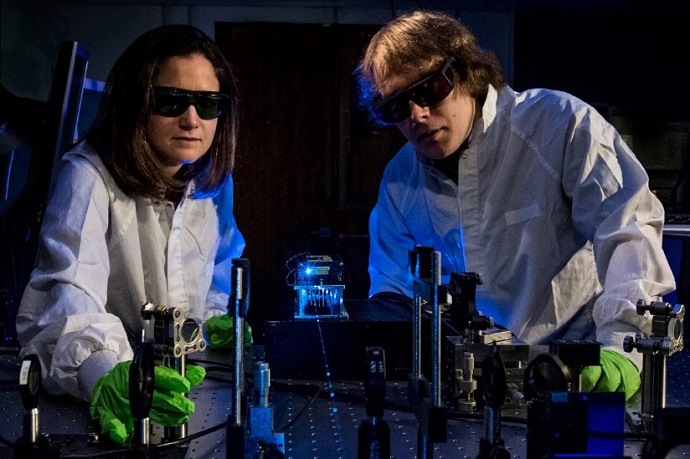APRIL 29, 2016
BY Amy Blumenthal
The USC Viterbi School of Engineering and Northrop Grumman have teamed up to establish a new home for advanced research in optical materials and nanophotonic devices.
The new organization — the Northrop Grumman Institute of Nanophotonics and Nanomaterials (NG-ION2) — will be based on the University Park Campus. It will bring together research teams from the university and aerospace industry to explore the properties of tiny structures and materials that exist only at the atomic level.
Nanophotonics is the study of the behavior of light on the nanometer scale and of the interaction of nanometer-scale objects with light. A nanometer is one billionth of a meter. A sheet of paper is about 100,000 nanometers thick.
“The collaboration between USC Viterbi and Northrop Grumman has a long, productive and impactful history,” said USC Viterbi Dean Yannis C. Yortsos. “NG-ION2 will enhance our common ties and contribute significantly to the advancement of photonics, an area of historical strength at USC, and of critical importance to technological evolution.”
Novel materials
Under the agreement, Northrop Grumman will contribute $500,000 to NG-ION2 in 2016. The funding will help foster interdisciplinary research by material scientists, electrical engineers, physicists and chemists to develop novel materials for optical devices.
“The creation of the institute is based on the shared recognition that technological innovation begins with fundamental science discoveries,” said Tom Pieronek, vice president, basic research, Northrop Grumman Aerospace Systems. “Breakthroughs in optical materials can lead to disruptive changes in how we approach missions of global significance. We’re looking forward to a sustained and productive relationship with USC.”
Historically, industry has played a pivotal role in enabling the transition of nanomaterials from academic research into commercial devices. NG-ION2 will support fundamental, interdisciplinary science research that will accelerate innovation as nanomaterials become increasingly complex.
NG-ION2 will also enable regular exchanges between USC and Northrop Grumman researchers working across projects. USC Viterbi will grant Northrop Grumman scientists visiting researcher positions, a strategy that will allow them to work collaboratively on campus with their institute counterparts to advance science in nanomaterials and integrated photonics.
USC Viterbi Professor Andrea Armani and Jesse Tice, senior scientist and nanomaterials group lead at Northrop Grumman Aerospace Systems, will serve as NG-ION2’s co-directors. Armani leads a research group at USC focused on integrated photonics.
The Northrop Grumman/USC Viterbi team has selected several projects for initial support in 2016, including theoretical and experimental studies on 2-D materials, plasmonics and nonlinear optics. The team will select additional projects for support this summer.













